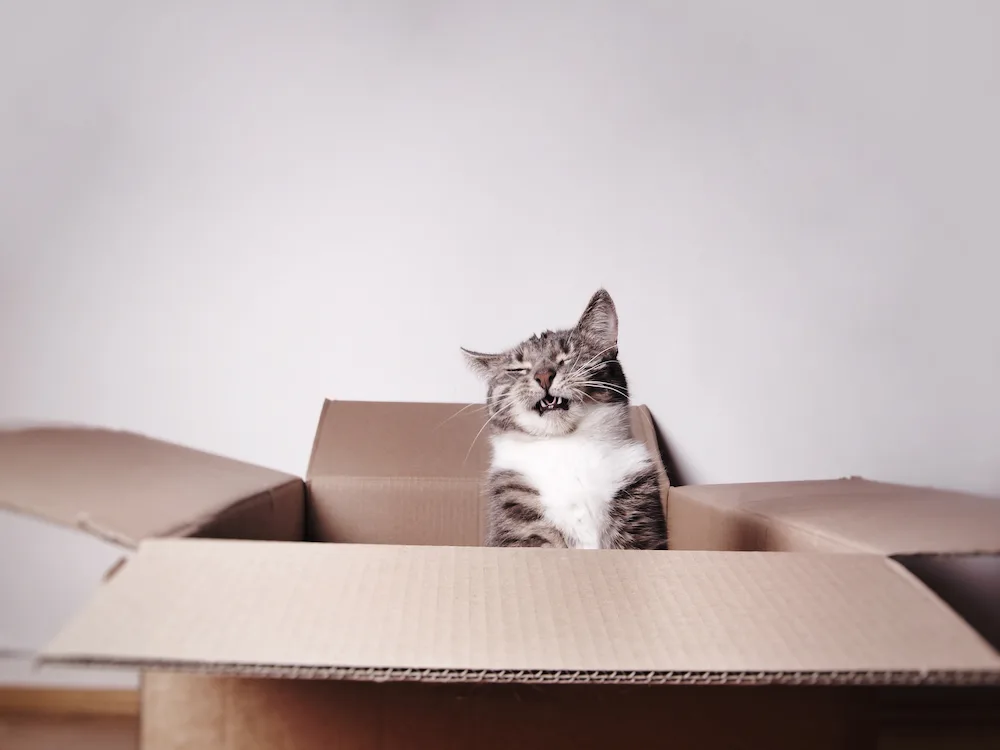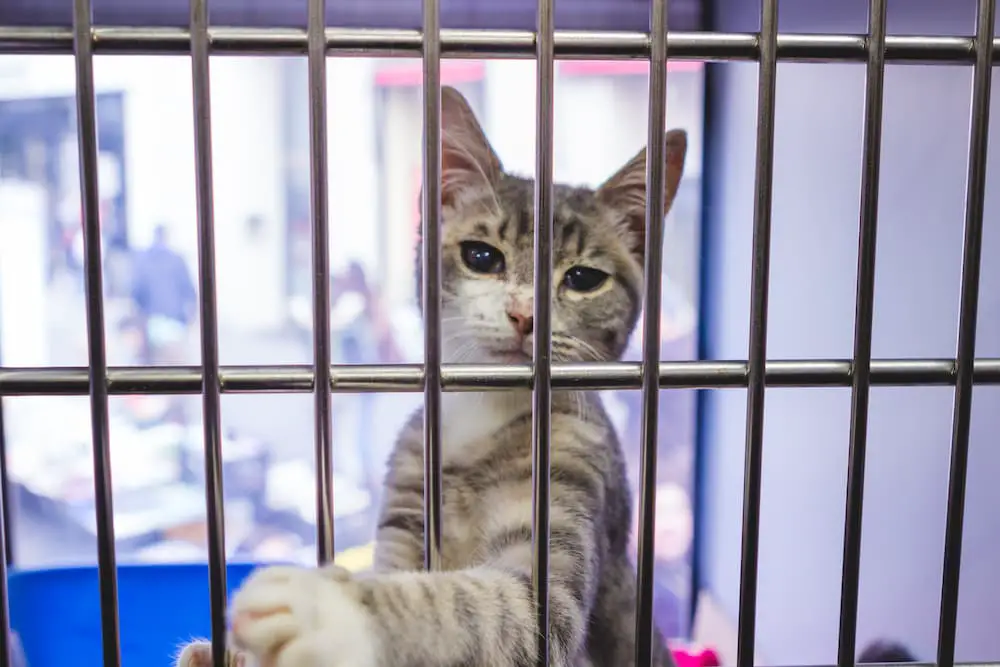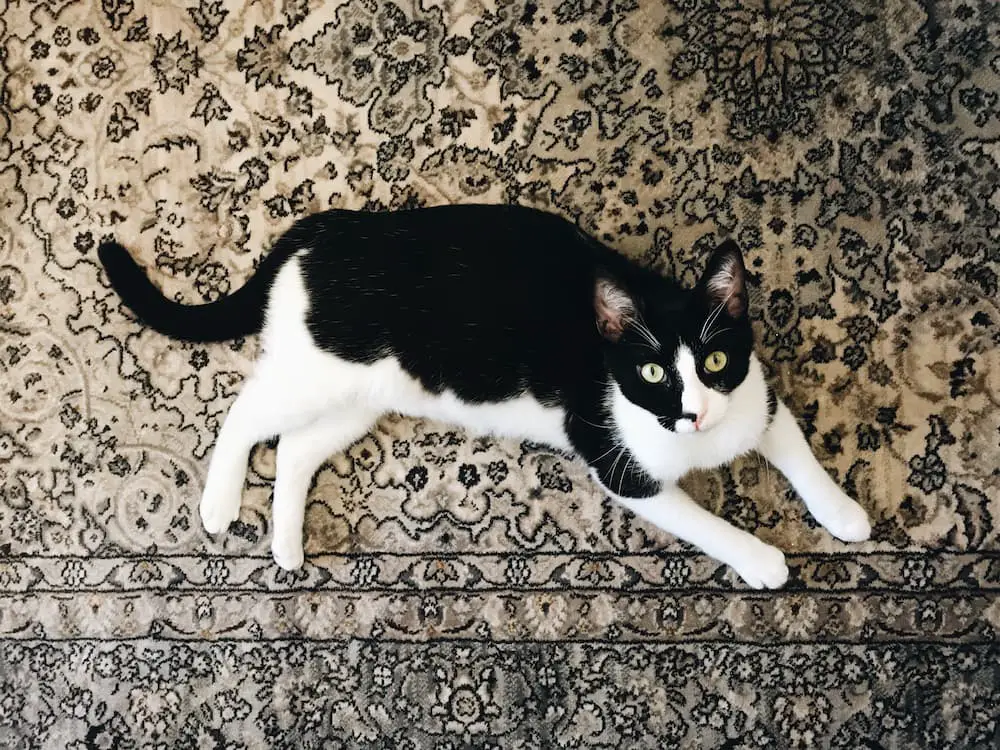 It might literally be one of my worst nightmares – losing a cat due to my own forgetfulness. Some indoor cats couldn’t care less about an open door or a cracked window. But others will take advantage of any chance for a peek at what lays beyond your four walls.
It might literally be one of my worst nightmares – losing a cat due to my own forgetfulness. Some indoor cats couldn’t care less about an open door or a cracked window. But others will take advantage of any chance for a peek at what lays beyond your four walls.
A few years ago I took my two Sphynx cats with me when visiting a friend. There were already cats in the house so I assumed all doors and windows would naturally be secure. Right? Nope. On a beautiful summer day I noticed the sun puddle in the front room was empty. I called my cats’ names and walked around for a few minutes before panic set in. No cats. In a back room I found a window cracked open into the outdoor car port.
I ran through the living room shouting something about lost cats and then dashed out the front door. Luckily, Alice was laying casually in a patch of grass enjoying the sun. Kyra was standing behind my car a few feet away. They gazed at me innocently, obviously thinking that the window was left open for their pleasure. I scooped Alice up before she could protest and then did the same with Kyra. I kissed them and uselessly told them that that hairless cats can’t go outside.
Both cats were fine and it was, of course, an honest mistake. But there was a busy road close by, and the temperatures that day would reach over 100 degrees Fahrenheit within hours. We could easily have had a less happy ending.
So what to do if your feline friend gets lost? I have some ideas:
Go out and look
This of course is the first thing people will usually do. But don’t stop after one try. Continue to go out looking during different times of day. Make sure to check under porches and in wooded areas. Cats might return to a previously searched area hours or days later. So repeated searches can be essential to finding your feline. If you’re lucky enough to spot your cat, don’t run toward her! She could spook and take off. Instead, approach slowly or try to lure her toward you with treats. If you’re in a noisy or highly trafficked area, bring a carrier with you so you can get your cat secured as soon as you catch her.
Alert the neighbors
Cats that are not used to being outside often don’t go far, so the people in surrounding homes might spot your cat in the neighborhood or on their property. Take a recent picture with you and mention identifying traits such as collars or markings on their fur. Most people are happy to keep an eye out for you.
Make signs
Make laminated “lost cat” signs with a recent clear photo of your cat and the best phone numbers to reach you. It also might help to include a reward as incentive but it’s not necessary. Place the signs on mail boxes (outside not inside), on bulletin boards, in veterinary offices and pet stores and inside local restaurants with permission (the smell of food could attract a hungry cat).
You also might show it to people who drive through the area regularly such as UPS and FedEx drivers.
Contact your cat’s microchip company
If your cat has previously been microchipped it is a good idea to contact the company (Home Again, Avid, etc.) to double check that they have the right information on file to contact you in case the cat is brought to a veterinarian or shelter.
Visit local animal shelters and rescues often
Don’t assume that just because your cat is found that the employees will be able to identify the cat as your’s and contact you. Even if you have been to see them before, follow ups are crucial. So call or stop by often. Sadly, many shelters are forced to euthanize animals that are injured or deemed un-adoptable. Waiting too long could have tragic results in areas with overcrowded situations.
Target classified websites
Place a “lost cat” ad in your local newspaper or on a local classified website such as Craigslist. Include the same information that you would on the sign. Check Petfinder for local rescues that might have found your lost cat, they often post photos. Facebook can also be a great networking resource. Share a picture of the poster with your local connections. And, check local groups dealing with lost and found pets.
Set up a safe spot for your cat to wait
Find an area around your home such as the space under a porch or in a corner where your cat might come to hide. Place a blanket or clothing with your scent in a box or carrier. Put food or some other alluring scent inside and wait. Check frequently. This might attract other creatures, though, so be careful of raccoons.
If you’ve moved recently, check your old residence
Many cats go missing after a move, and a large percentage of them attempt to return to their old territory. Cats actually have a “homing instinct”, and it can be disrupted after a move. If you’re within 10 miles of your old residence and your cat goes missing, see if he or she has gone back there.
Once your cat is back home, it’s a good idea to take kitty to the vet for a check up, make sure she hasn’t picked up any parasites, check for cuts and scrapes, and insert a microchip if your cat doesn’t already have one.







